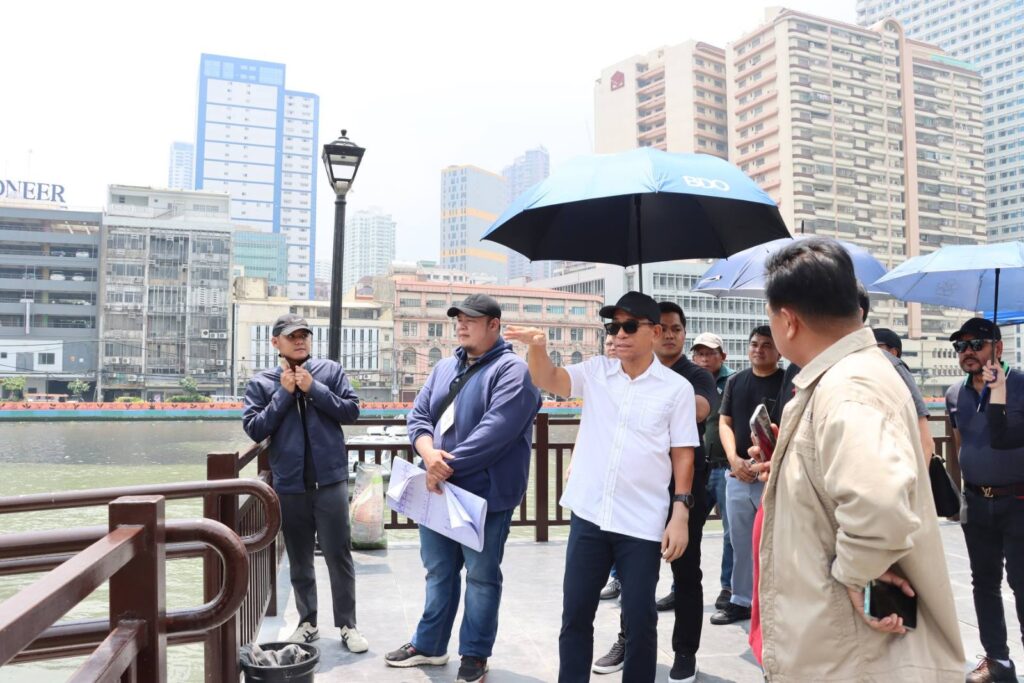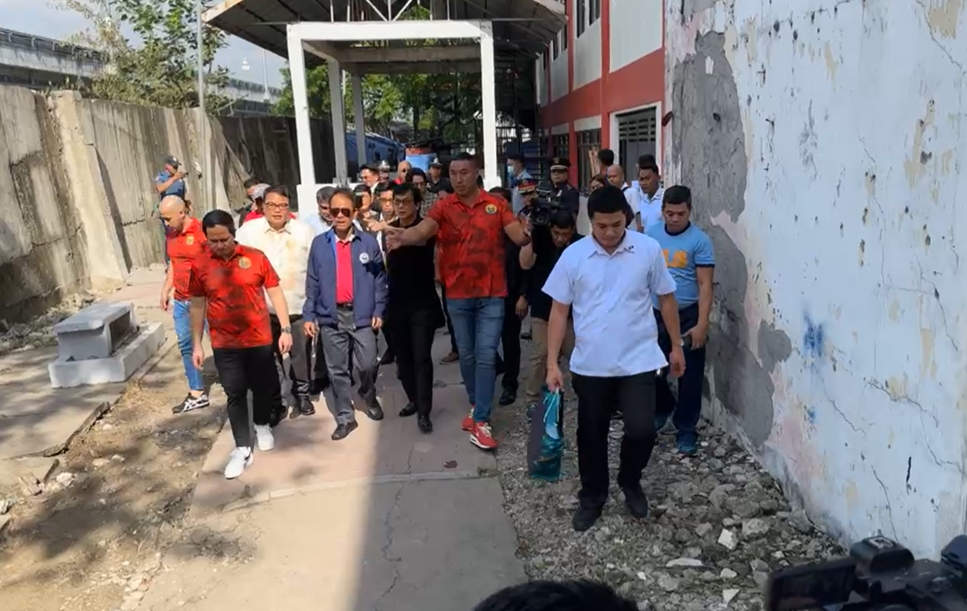THE mighty Pasig River has fallen victim to pollution and neglect.
But a tide of change is rising under the administration of President Ferdinand R. Marcos, Jr.
Driven by a revolutionary vision of transforming its banks into a network of linear parks, President Marcos has issued Executive Order 35 ordering the creation of an Inter-Agency Council for the Pasig River Urban Development, which is tasked to spearhead the rehabilitation and enhancement of the river's banks.
This marks a significant turning point in the Pasig River's history, offering hope for a cleaner, greener, and more vibrant future for this vital waterway.

DHSUD Secretary Jerry Acuzar conducts an ocular on the Pasig River. (Source: DHSUD)
This ambitious collaboration between the Department of Human Settlements and Urban Development (DHSUD), Department of the Interior and Local Government (DILG), Metropolitan Manila Development Authority (MMDA), Department of Environment and Natural Resources (DENR), and local government units (LGUs) promises to rewrite the narrative of this historic waterway.
“The issuance of Executive Order No. 35 is like hitting many birds with one stone. It will trigger huge positive impacts to several sectors like housing, transportation and even tourism,” Housing Secretary Jerry Acuzar said in a statement.
Imagine lush green promenades replacing concrete embankments, vibrantly colored wildflowers swaying in the breeze instead of plastic debris. Children playing amidst native trees, their laughter echoing through the rustling leaves. Joggers tracing paths meandering along the river, invigorated by the fresh air. This isn't a dream, it's the future of the Pasig River.

Government agencies together with San Juan City LGU conducts an ocular inspection along an area near the San Juan River banks in Barangay Batis.
(Source: San Juan City PIO)
On Monday, January 15, Interior Secretary Benhur Abalos, Acuzar, MMDA Chairperson Romando Artes, and Metro Manila Council President and San Juan City Mayor Francis Zamora jointly inspected San Juan River (part of Pasig River) in Barangay Batis, San Juan City. The objective of the inspection was to evaluate, verify, and improve the execution of government initiatives, specifically focusing on the development of a linear park utilizing nature-based solution concepts.
“Nabanggit po ni Mayor Zamora [na] kami po ay gagawa ng mahabang linear park dito. Hindi lang po dito sa bayan ng San Juan, diretso po yan ng Manila hanggang Quezon City. Nadiscuss po namin kay Secretary Abalos at kay Secretary Acuzar at pagtutulung-tulungan naman po namin i-develop ‘to,” said Chairperson Artes for his part.
(Translation: Mayor Zamora mentioned that we will develop a long linear park here. Not just in the City of San Juan, it will go straight to Manila all the way to Quezon City. We already discussed this with Secretary Abalos and Secretary Acuzar and we will work together to develop this.)
Related article: San Juan LGU, NGAs team up to develop San Juan River easements
Nature-based solutions
The key to this transformation lies in nature-based solutions (NBS). According to the inter-agency, these innovative approaches mimic natural processes to address urban challenges. Think rain gardens filtering pollutants, wetlands absorbing floodwaters, and native plants attracting pollinators. By integrating NBS into the linear parks, stakeholders create a vibrant ecosystem that cleans the river, mitigates floods, and fosters biodiversity.
From concrete jungle to urban oasis
The linear parks won't just be aesthetically pleasing; they'll be functional hubs for recreation and community engagement.
Imagine open-air cafes and amphitheaters nestled amidst the greenery, buzzing with life and culture.
Floating markets and kayak tours on the revitalized river, promoting sustainable tourism and economic opportunities.
Educational pathways showcasing the river's history and ecology, fostering environmental awareness in future generations.
This initiative truly extends beyond simply cleaning up the river; it envisions a transformed riverfront that seamlessly integrates environmental restoration with economic and social development.
Related article: Pasig River rehabilitation aims for economic boost, sustainable housing
Breaking down walls, building bridges
This ambitious project isn't just about the river; it's about the people. The linear parks will bridge the gap between communities, creating shared spaces for interaction and social cohesion. Imagine children from different neighborhoods playing together, families enjoying picnics under the shade of trees, and artists showcasing their talents on open stages.
A collaborative journey
The success of this project hinges on collaboration.
The council, chaired by DHSUD, brings together a diverse group of government agencies, each with specialized expertise. This includes heavyweights like MMDA, DENR, and Department of Public Works and Highways (DPWH), ensuring a comprehensive and coordinated approach to the rehabilitation.
Related article: IAC-PRUD launches ‘Pasig Bigyan Buhay Muli’ project
These agencies are working hand-in-hand with communities, environmental groups, and experts. This collaborative spirit is crucial to ensure the project reflects the needs and aspirations of the people who will benefit from it most.
The complete transformation of the Pasig River is more than just an environmental project; it's a symbol of hope and resilience. It's a testament to the power of collaboration, innovation, and a shared commitment to a better future for Manila.
As we watch these linear parks take root, we witness the transformation of a once-forgotten river into a vibrant artery of life, breathing new life into the city and its people.
Let's join hands and make this vision a reality. Let the Pasig River flow once again, not just with water, but with the dreams and aspirations of a nation toward a Bagong Pilipinas. (JVD/PIA-NCR)
Related article: Pasig River: A Historical Waterway of Cultural Significance

